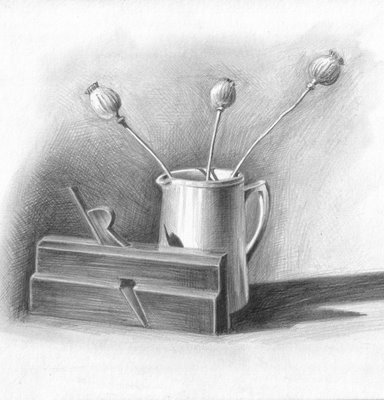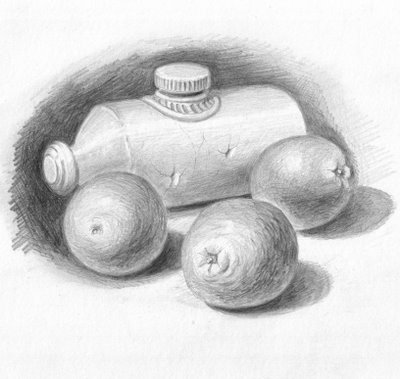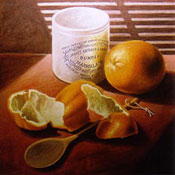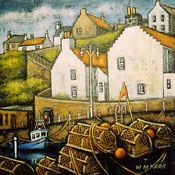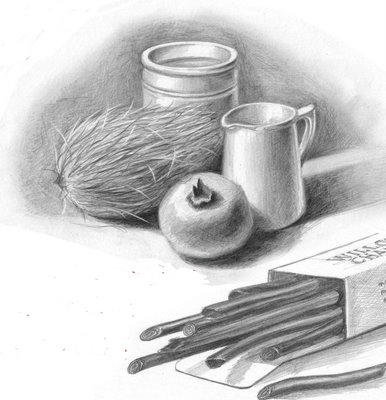
Ever since prehistoric man rummaged in the dying embers of a fire, picked up a *burnt stick and drew on cave walls,
drawing has held a fascination for us. There is something almost magical about being able to take a pencil and create a three-dimensional image on the flat surface of a piece of paper. It can be practised almost anywhere and, with the basic requirements being only a pencil or pen and a sketch book, it needn’t cost the earth...it's easy to see why it is such a popular pastime.
Although drawing will bring you immense pleasure when everything is going well, those of you who are already drawing will know only too well the frustration that can be felt when you just can’t quite get something right. How many of us have torn up drawings or vowed never to draw again when we are struggling to draw a smooth curve or have a problem with (that dreaded word) perspective? How many of you are convinced you can’t draw and are reluctant to start because your first attempts may receive harsh judgement from others?
Up until we were about six or seven years old it never bothered us to show our drawings to others. Then, round about that age, we seemed to become conscious of comments on our efforts and sadly, such criticism caused a number of people to give up at that point. I am hoping that by reading this, it will encourage those of you who always wanted to draw - but who haven't picked up a pencil since your childhood - to make a start now. I am also hoping that those of you who are drawing and painting will learn a thing or two along the way to help and motivate you...and remember, if anyone ever criticises your work, ask them to show you their drawings!
*Interesting fact...although we have moved on a little from cave walls, believe it or not, we are still drawing with burnt sticks. Modern charcoal is simply charred twigs, usually from the willow tree!
